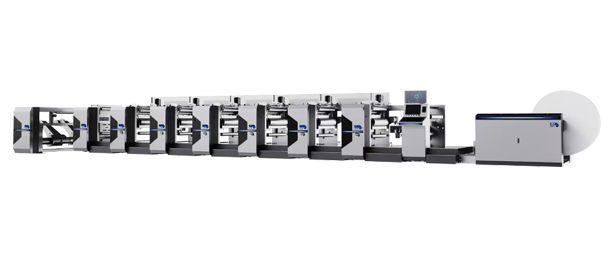Next: What's the Difference Between Wax Coating Machine and Non-Plastic Coating Machine?
Many buyers rush into purchasing a Flexographic Printing Machine without fully clarifying their own needs, only to find the machine doesn't fit their production goals—like being too slow for their output demands or unable to handle their target packaging types. This article lists the essential questions buyers must answer first, helping you narrow down options and pick a machine that truly matches your business needs.

Your production volume directly determines the machine's required speed and durability—this is the first question to clarify, as it eliminates mismatched options early:
If you have small-batch production (e.g., under 100,000 units monthly), a standard-speed machine (around 150–200 m/min) is sufficient. It balances cost and performance without wasting capacity.
If you need medium-to-large batch production (e.g., over 300,000 units monthly), prioritize a high-speed, durable machine (250–300 m/min). These machines have reinforced components (like wear-resistant rollers) to handle long working hours without frequent breakdowns.
Answering this question avoids buying a "too-slow" machine that bottlenecks production or a "too-fast" one that increases unnecessary costs.
Different packaging types have specific requirements for the machine's functions—this ensures the machine can handle your core products:
If you focus on simple paper packaging (e.g., food boxes, gift bags), a basic Flexographic Printing Machine with standard drying (hot-air) and pressure control works. No extra features are needed.
If you print medical packaging (e.g., mask wrappers, glove pouches), the machine must have hygiene-compliant components (e.g., food-grade ink systems, easy-to-clean surfaces) and precision registration (to align small text like sterilization dates).
If you make plastic packaging (e.g., beverage labels, detergent wrappers), look for a machine with plastic-specific ink compatibility and tension control (to prevent plastic stretching during printing).
Skipping this question risks buying a machine that can't print your key packaging types, leading to rework or additional investments.
Buying a machine isn't just for current needs—you should consider if it can adapt to future expansion:
If you plan to add new packaging types (e.g., from paper to plastic) in 1–2 years, choose a machine with modular design. Modular machines let you add components (like a pre-treatment module for plastic) later, instead of buying a whole new machine.
If you expect production volume to grow by 50% or more, select a machine with a scalable frame. These frames can accommodate extra printing units or speed upgrades, saving cost compared to replacing a smaller machine.
Thinking about growth ensures the machine remains useful as your business expands, avoiding premature replacement.
Before browsing Flexographic Printing Machine options, answering these three questions—about production volume, core packaging type, and future growth—clears up confusion and focuses your choices. It turns a vague "I need a printing machine" into a specific "I need a machine that handles X volume, prints Y packaging, and grows with me"—making the buying process more efficient and less risky.
If you've clarified your production volume, core packaging type, and growth needs and want to see machines tailored to these scenarios, our product page breaks down options by common business requirements. Visit our Flexographic Printing Machine Product Page to find machines that align with your specific buying goals.
GET A QUOTE